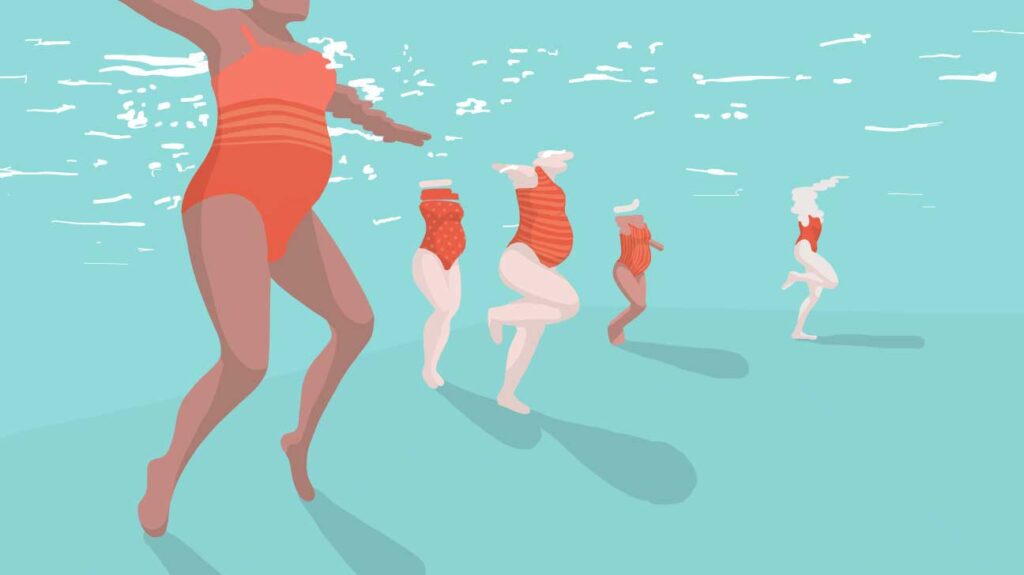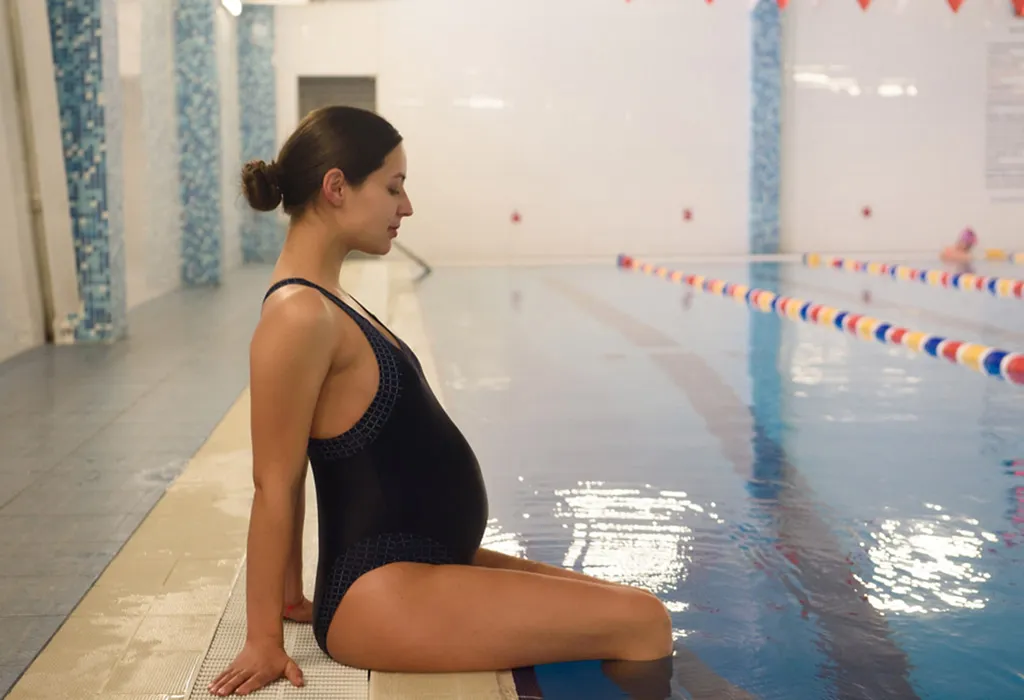Swimming While Pregnant? Discover the Top 10 Safety Must Knows
Once you may have found yourself thinking, “Is it safe to swim with me being pregnant?” It’s a query I have heard from several pregnant women, particularly in Pakistan, where the summer heat makes water seem like the most pleasant refresher. As a doctor, I totally get your feelings. You want to be active and full of health, but not at the risk of your baby’s safety. However, if you take the proper measures, swimming may be the safest and most beneficial exercise during pregnancy. According to a study, swimming is efficient for circulation, it relieves swelling, and it decreases the chance of gestational diabetes.
The first step to this besides choosing a sterilized pool is also to avoid some strokes and play safe by knowing each stage. I will tell you the 10 most important safety rules that each pregnant woman must know before getting into the water.
Quick information in this blog
Why Swimming Can Be the Safest Exercise During Pregnancy
As a doctor, I often suggest swimming to my pregnant patients not only because it is gentle but also because it is a unique combination of safety and full body benefit. If you were experiencing some symptoms such as back pain, swollen feet, and general fatigue that are very common to many expecting mothers in Pakistan, especially during hot months, then swimming would be like an instant medicine to you.
The moment you are in water your body can feel as if it were lighter. This removes pressure from your joints and spine thus giving your muscles the opportunity to work without any stress. That is definitely a good thing when you are carrying extra weight and your hormones are making the movement difficult.
In fact, results from the studies have plainly stated that swimming enhances circulation, can be a good way to control weight gain, is a natural diuretic, and can reduce the chances of getting gestational diabetes. Many of my patients also share how emotionally calming it feels like the water is giving them a break, both physically and mentally.Swimming is certainly safe and, in addition to that, when it is done right, it can be the most healing thing for you and your baby during gestation period.

Common Swimming Mistakes Pregnant Women Should Avoid
The majority of pregnant women I have met are very enthusiastic about swimming and that is definitely good for them. However, even highly safe activities can become dangerous without proper care. In Pakistan, where pool hygiene varies, always choose a clean, well maintained facility to avoid infections. Overexertion is one of the common mistakes. Your body has to work hard; slow and soft movements will more than suffice. According to the American College of Obstetricians and Gynecologists, swimming is one of the safest forms of exercise during pregnancy.
In addition, using strokes that are not safe such as butterfly or fast freestyle is another problem without even realizing it, as these strokes can result in a strained back or abdomen. I always recommend the breaststroke or light floating. Besides that, you should also take care of the temperature of the water. Pools that are very hot or very cold can change the blood flow in your body and give you a feeling of dizziness. Swimming shall become your source of relaxation and not your energy source. The speed at which one moves is not as important as the act of moving safely, and enjoying the sensation of the body’s activities while taking care of the health of the baby.
Top 10 Swimming Safety Tips for Every Trimester

Pregnancy at each new stage changes your body in different ways and so your swimming routine should be changed accordingly. As a doctor, I give my patients step-by-step guidance in the water to ensure their safety, energy, and comfort in the water. Now, 10 most important tips will protect you all through your pregnancy while swimming safely:
First Trimester (Weeks 1 to 12)
- Start Slow: Your body is getting used to things; start with short (15–20 min) sessions and increase the time bit by bit.
- Focus on Gentle Movements: swimming at a low pace, doing breaststroke, or merely floating activates you without over exerting.
- Hydrate Well: You may lose the sensation while swimming, but dehydration can still happen without you realizing.
Second Trimester (Weeks 13 to 27)
- Watch Your Balance: Your womb is getting bigger, so be very careful while going in and out of the pool. If handrails are there, use them.
- Avoid Diving or Jumping: The water may seem very inviting but a sudden force may hurt the abdomen or back without your notice.
- Stick to Safe Strokes: Breaststroke and back floating are excellent for getting rid of back pain at this time.
Third Trimester (Weeks 28 to 40)
- Keep It Cool and Calm: Stay away from hot pools and choose those that are cooler and have good ventilation, so you don’t get too hot.
- Listen to Your Body: If you experience any of the above symptoms, stop doing the activity straight away.
- Shorten Your Sessions: Moving gently for 10 to 15 minutes might just be enough; what you want is comfortable, not hard.
- Speak to Your Doctor Regularly: No two pregnancies are the same. It is important to get in touch with your OB-GYN before going on or starting a new exercise routine.
When to Stop Swimming and Seek Medical Advice
As much as swimming can benefit you during pregnancy, it’s just as important to know when to pause. I always tell my patients: listen to your body first, not your fitness goals. If you ever feel dizzy, breathless, or experience cramps, that’s your body asking for rest. Any vaginal bleeding, unusual discharge, or sudden pain especially in your abdomen or lower back , is a clear sign to stop immediately. In Pakistan’s warmer climates, overheating is also a real risk, so don’t push through discomfort thinking it’s normal. It’s not. When in doubt, reach out to your OB-GYN. There’s no harm in being cautious of your well being and your baby’s safety always comes first.

Best Swimming Strokes for Pregnant Women
During pregnancy, swimming can be an extremely beneficial experience, but the stroke choice has a big impact on the result. Your body is going through changes and your joints and muscles require support, not pressure. This is why choosing strokes that are balanced, properly aligned, and involve a minimum of movement is very important. Some styles not only help to alleviate the strain but also provide physical comfort in case of quite common pregnancy ailments such as back pain and swelling.
- Breaststroke: Helps your body stay in the correct position, enables you to have regular breathing, and strengthens the chest and back without any twisting of the torso.
- Back Floating or Gentle Backstroke: It is relaxing for your spine and your hips, so try it out because it might be very helpful in the second and third trimesters.
Whereas, high intensity strokes like butterfly or freestyle sprints should definitely be avoided. The danger is that your belly might get overstretched and you will become very tired. Comfort is what we are looking for, not peak performance just enjoy the feeling of the water supporting and soothing your body.
What to Pack for a Safe and Comfortable Swim
During your pregnancy, if you want your swim to be safe and without any stress, you have to pack smart. Preparation, in my opinion, is the key to comfort and confidence, I often tell my patients.
- Maternity Swimsuit: It should be one that gives you support but does not restrict your movement.
- Non-Slip Flip-Flops: They will stop you from slipping around the wet areas by the pool.
- Soft Towel: After swimming gently dry yourself off and stay warm.
- Water Bottle: Keep yourself hydrated even though you may not feel thirsty.
- Compression Socks: If your doctor suggests so, these will assist you in circulation improvement.
- Maternity Support Belt: Gives you the option to use extra support for your back and bump if necessary.
Comfort and care are a perfect match. Just a couple of essentials will help you have a swim feeling relaxed, supported and confident in your routine.

Warning Signs to Watch for While Swimming
Often, swimming gives a sensation of mild gentleness and a feeling of invigoration but it is quite necessary to be watchful that your body responds positively however. When a woman is carrying a baby, her body is more sensitive to changes particularly the temperature, effort, and water intake. From my experience as a doctor, I never tired of telling my patients that they should not ignore any little discomforts because those can sometimes be indications of something more serious. If you recognize early warning signs, you will be able to avoid the complications.
- Cramping: It may be a symptom of change in muscle tone, loss of body fluids, or infection in the uterus.
- Dizziness or Lightheadedness: It can be a sign that the blood pressure is too low or the body temperature is too high.
- Blurred Vision: It can refer to blood flow problems or a sudden lack of sugar in blood. Shortness of Breath: It is a symptom that demonstrates if you have exercised too much or if you are short of oxygen.
If that is the case, leave the pool quietly and take a rest. Don’t be afraid to bring up the matter with your doctor, it is always advisable to be on the safe side when you are pregnant.
Final Thoughts
Swimming might be one of the most enjoyable and least invasive exercises during pregnancy, provided that safety measures are followed. It ranged from realizing the transformation of your body’s requirements during different trimesters to learning the mistakes to be avoided and selecting the suitable strokes, every aspect was important. Good organization, understanding when to discontinue, and being attentive to any symptoms can enable you to derive the maximum benefits from swimming and at the same time, keep both you and your baby safe.
As a medical professional, I can assert that swimming ensures both physical and psychological comfort during pregnancy. However, your body remains the ultimate decision maker. Make sure to keep yourself hydrated, swim in a gentle manner, and always get your doctor’s permission before embarking on a new exercise. The knowledge and caution you have will make you enjoy each swimming session as a safe, relaxing, and energizing experience throughout your pregnancy.
FREQUENTLY ASKED QUESTIONS
Is it safe to swim during all three trimesters of pregnancy?
Certainly, after obtaining your provider’s permission, swimming is generally safe during all trimesters. Remember only to swim for the time, intensity, and the stroke that works for each stage.
What swimming strokes are best during pregnancy?
The safest swimming strokes are the breaststroke and very gentle back floating. Those strokes reduce the strain, support the spine, and help to breathe comfortably.
Can swimming in hot water harm my baby?
Indeed, the hot water can make your body temperature go up excessively, especially in the first trimester and it is not good for the baby. So, always prefer a pool that is not hot but cool or lukewarm and has good ventilation. during the day, in case you have been sweating a lot or feel sticky.
What should I avoid while swimming pregnant?
Steer clear of diving, swimming fastest strokes, hot pools, and overexerting yourself. Likewise, be sure never to swim in dirty pools or those which are not well maintained to reduce the risk of infection.
